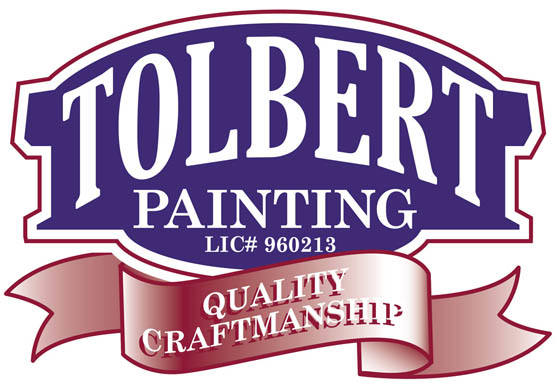Tolbert Painting: How to avoid the
pesky paint bubble (DIY)
The mysterious paint bubble: I have seen it on many occasions. This phenomena generally occurs on the outside of a building on decks, wood siding, or even stucco. You may finish painting an area and think everything looks fantastic, but you return in a few hours to dry paint and bubbles. This bubble is a pocket of air between what you are trying to paint and the dried top coat itself. Bubbles can occur for a number of reasons:
 1) Surface tension. Surface tension occurs when the new paint dries and shrinks, creating tension on the top coat. If what you are painting underneath has not been prepped properly by cleaning, sanding or priming, the new top coat will pull away, causing a bubble.
1) Surface tension. Surface tension occurs when the new paint dries and shrinks, creating tension on the top coat. If what you are painting underneath has not been prepped properly by cleaning, sanding or priming, the new top coat will pull away, causing a bubble.
2) Multiple layers of paint. Bubbles may also occur when you paint over a surface that has already been painted multiple times before. You may have prepped the surface you plan to paint, but one of the layers under that may be failing and the shrinkage from the new paint could cause a bubble.
3) Moisture and weather conditions. This is the most common problem. Because we live in a coastal region, we are subject to heavy fog and dense moister from time to time. It’s common for folks to apply coatings in these conditions and not think twice. Why not – it’s only fog, it’s not rain.
However, things like temperature and humidity can negatively affect your paint. When paint is applied in high humidity the moisture from the air gets trapped between the paint and the sub straight. When the area is dry and then heats up, the trapped moisture will begin to evaporate under the dry paint and cause a bubble.
 The label on the pain can usually will tell you the conditions the manufacturer recommends for applied coatings. Pay attention to this.
The label on the pain can usually will tell you the conditions the manufacturer recommends for applied coatings. Pay attention to this.
If your thinking about painting your deck or siding this summer, make sure you have good prep and you have read your product label before applying your coatings. If you get in to trouble it never hurts to contact a professional for advise.
Happy Home Improvements,
Joel Tolbert
















